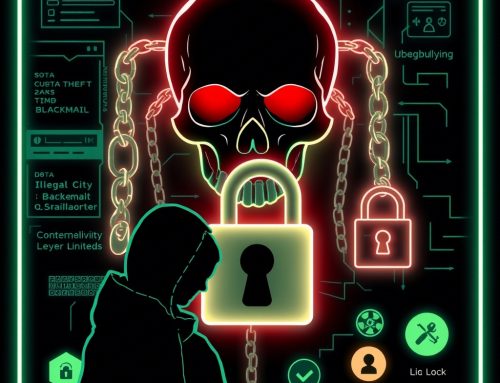With technology playing an integral role in our daily lives, teaching children about cybersecurity has never been more crucial. Today’s children are growing up in a digital-first world where the internet is a constant companion, whether for education, entertainment, or social interactions. Yet, this increased exposure also comes with significant risks. Building cybersecurity literacy from an early age empowers children to stay safe and make responsible choices online, ensuring they are prepared to handle the challenges posed by the digital age.
Why Children Are Vulnerable to Cyber Threats
Children, by nature, are more susceptible to cyber threats than adults. They often lack the knowledge or experience required to identify potential dangers, making them easy targets for malicious activities like phishing, cyberbullying, or even online predators. Unlike adults, children may not fully comprehend the consequences of sharing personal information or clicking on suspicious links, leaving them exposed to identity theft, scams, or harmful interactions.
By educating children about cybersecurity, we equip them with the tools they need to protect themselves online. Making them aware of potential risks empowers them to make smarter decisions, such as avoiding unsafe behavior and recognizing suspicious activity.
The Role of Cybersecurity Education
Cybersecurity education for children isn’t just about teaching them to avoid risks—it’s about fostering responsibility and critical thinking when navigating the digital world. Here are some key areas where cybersecurity knowledge can make a difference:
- Developing Safe Online Habits: Children will learn to create strong passwords, recognize secure websites, and avoid giving out personal information unnecessarily.
- Recognizing Cyber Threats: Understanding common online dangers, such as phishing scams, malware, and cyberbullying, helps children protect themselves and others.
- Protecting Privacy: Teaching children how to adjust privacy settings on social media platforms and secure their devices ensures greater control over who can access their information.
By instilling these habits early, children are better prepared for the rapidly evolving digital environment—not just today but throughout their lives.
A Lifelong Skill with Future Implications
Cybersecurity literacy extends far beyond childhood. It is quickly becoming an essential life skill for personal safety, privacy, and even future career success. With workplaces increasingly relying on technology, the ability to recognize and mitigate cybersecurity risks will provide teenagers and young adults with a competitive edge in the job market.
Additionally, as advancements in technology blur the boundaries between online and offline life, cybersecurity knowledge is critical for safeguarding personal information. From financial transactions to cloud storage, every facet of modern life involves some level of digital interaction. Providing children with a foundation in cybersecurity ensures they’re not only protected but also adept at managing risks in a tech-driven world.
How to Teach Your Children About Cybersecurity
Teaching children about cybersecurity doesn’t have to be intimidating. With the right approach, these lessons can be integrated into daily conversations and practices, making them easy to understand and follow. Here are some actionable tips:
1. Encourage Strong Passwords
Teach children how to create strong passwords that include a mix of letters, numbers, and special characters. Explain the importance of keeping passwords private and avoiding common words or easily guessed phrases. Strong passwords are vital for keeping unauthorized users out of their accounts and personal data secure.
2. Discuss Online Risks
Have open and age-appropriate conversations about potential dangers online. Explain the concept of cyberbullying and its effects, and provide examples of how online predators operate. Helping children understand these risks will encourage them to approach online interactions with caution.
3. Teach Them to Spot Phishing Scams
Explain the dangers of phishing emails and messages, which are often used by scammers and hackers to steal information. Teach children not to click on links from unknown sources and to be skeptical of unexpected emails, especially if they ask for personal information.
4. Adjust Privacy Settings
Show children how to use privacy settings on social media platforms and other online services. Help them restrict who can view their posts and personal details, ensuring that their online presence remains secure.
5. Keep Devices Updated
Explain why software updates are essential for security. Encourage children to regularly update their devices and apps, emphasizing that these updates often include fixes to vulnerabilities that hackers could exploit.
Building a Safer Digital Future
The investment in cybersecurity education ultimately leads to better technology use and resilience against threats. By teaching children about cybersecurity, parents and educators can play a pivotal role in shaping a generation that is digitally responsible, aware, and capable of making informed decisions online.
Cybersecurity isn’t just about protecting devices; it’s about protecting futures. Introducing children to these principles early ensures they grow up equipped to handle the demands of an increasingly connected world—helping them thrive safely in both their personal and professional lives





